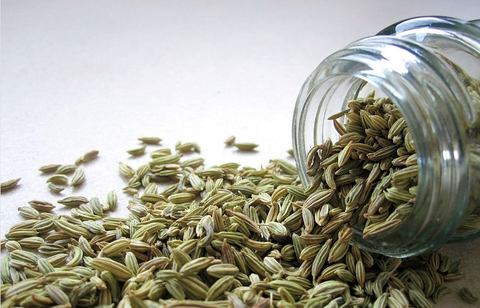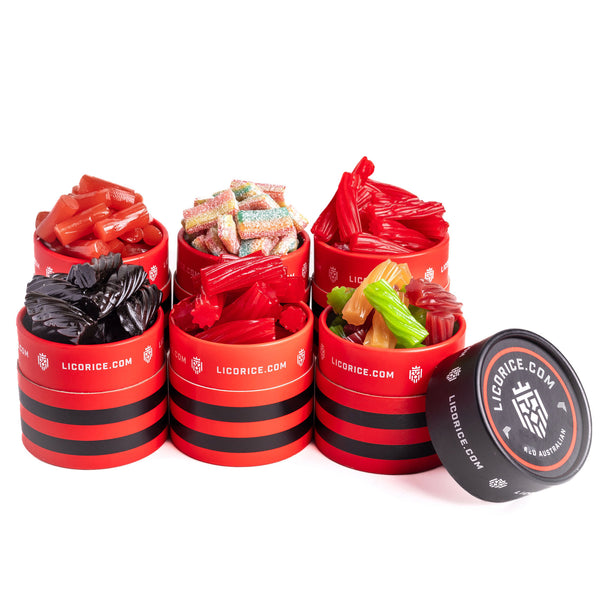How do you describe the taste of black licorice to someone who's never tried it before? Or to a friend whose only experience with the treat was the black jelly beans at the bottom of their Easter basket as a child?
When so many people have extreme opinions about their licorice preference, being able to describe why you like it can be helpful when trying to convert your friends or coworkers (or at the very least, stand your ground in the debate!).
Anise and Star Anise

One of the first things that people do when trying to describe a flavor is to compare it to something else. In the case of licorice, it's most often compared to anise or fennel.
In the United States, most of the licorice made domestically is flavored with anise rather than licorice extract. A note for the non-botanists, anise and star anise are two different plants, and while their licorice flavor is similar, anise is much stronger than its eastern counterpart.
Anise is frequently found in seasonal cookies like the German springerle and Italian pizzelles, to name two. It's also used to flavor liqueurs worldwide like absinthe, Pernod, ouzo, and raki.
Pastries and liqueurs are sweet, so you may be surprised to know that star anise is used in some of the world's most popular savory foods!
Star anise is used regularly in Indian cooking, both whole in braised dishes and ground in garam masala and chai spice blends. It's one of the ingredients that gives Chinese five-spice powder its distinctive flavor and is one of the ingredients that make pho broth so delicious!
Fennel and Other Herbs

Fennel is another standard herbal comparison. If you've eaten these bulbs as a vegetable, it has a very mild licorice-like flavor that pairs delightfully with beets or citrus in salads.
But no, you say, all licorice-like flavors are gross! Did you know that fennel gives Italian sausages their characteristic flavor and makes pizza sauce taste different from regular marinara? Cooked, fennel bulbs become even milder, and it's delicious baked with fish or in a brothy chicken soup.
Other herbs with licorice-like flavor profiles include basil, tarragon, and caraway. They're famous around the world for savory foods and, in the case of caraway, bread.
Is Licorice Loving Genetic?

How people interpret smells, on the other hand, is not genetic. As we know from kindergarten and first-grade science experiments, smell plays a significant role in how people experience flavors. Anethole, the compound in licorice, anise, fennel, and other plants with a similar flavor profile, gives all these plants similar tastes.
The scent is often profoundly tied with memories. It's possible that for some people, something like unsuspectingly biting into a piece of strong-flavored licorice as a child or having to take licorice-flavored cough medicine when they were sick has predisposed them against the smell of licorice rather than the flavor of the treat itself.
If you're curious and want to learn to enjoy the licorice treats your friends like, it's possible - it just takes time.
What About Salty Licorice?

As you might have guessed, the sal ammoniac gives salty licorice its salty taste, but it also adds an astringent quality as well similar to the way tannins do in red wine or rhubarb. Salty licorice has a sweetness, but it's not "candy" in the way that most Americans think of it.
It has complex layers of flavor, and it tingles the nose. Most popular with the Dutch and across Scandinavia, this almost savory licorice is better to let melt slowly on the tongue than chewed like softer varieties of licorice.
Take the Flavor Plunge!
Now that you've got the idea of what to expect, try some — especially if you haven't had any since you were a kid. Really, what have you got to lose? Maybe a few bucks, but that's it. Expand your horizons and educate your palate. Trying things that push us out of our comfort zone is good.
Learning to like something you've always thought you don't care for won't happen overnight. But, for those of you who've never tried black licorice because someone you know didn't like it, don't let something like candy intimidate you.
Start with the sweeter, softer licorice, such as our Australian Black, and broaden your horizons. Try just a little bit at a time now and then. Soon you'll start to look forward to that distinctive flavor, and it's a sweet pick-me-up after dinner or in the afternoon with a cup of tea.
And hey, at least you'll know what to say when someone asks you what black licorice tastes like!














